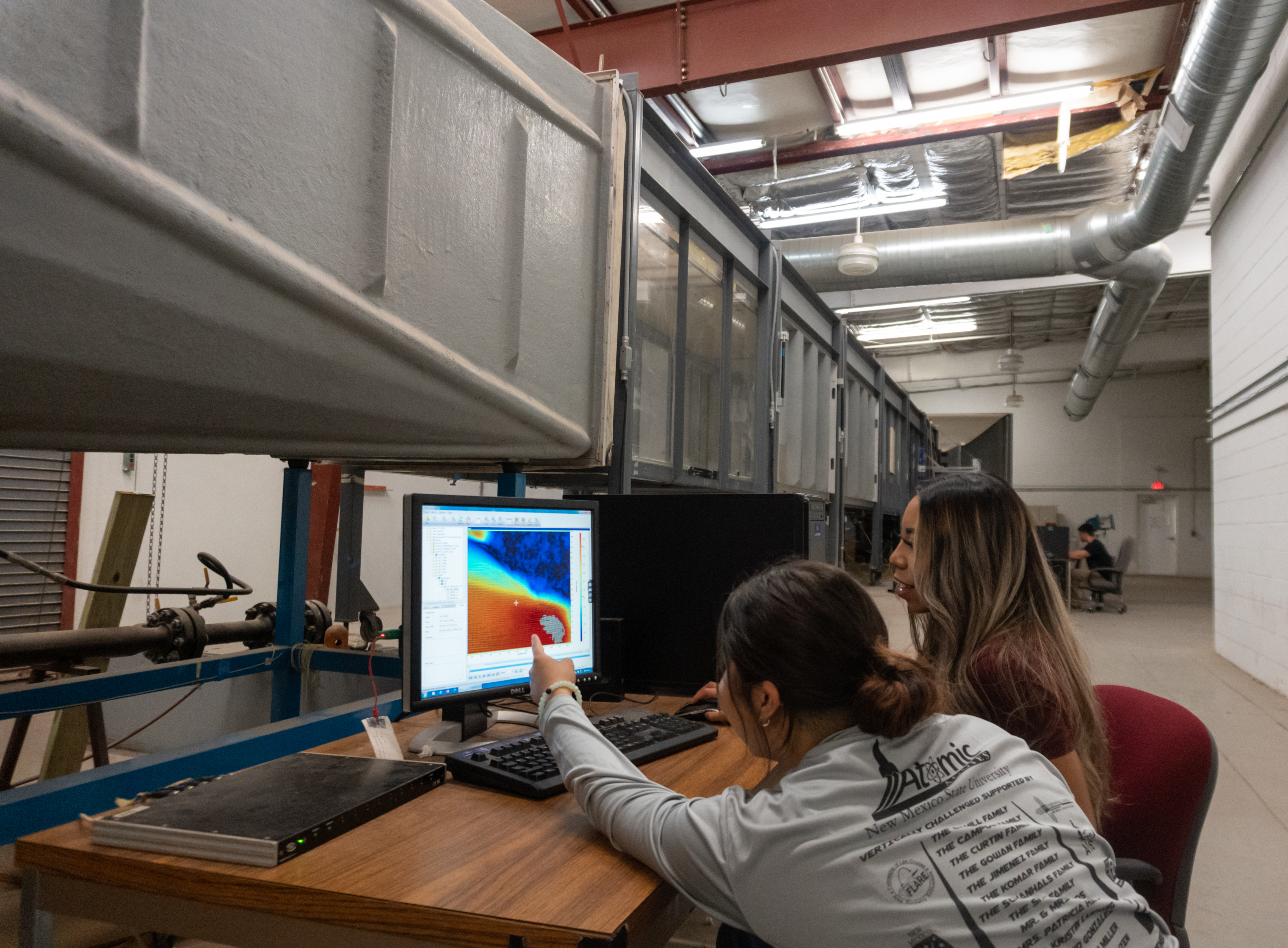
The U.S. Department of Defense increased its hypersonic research budget of $600 million in 2021 to $3.8 billion in 2022 and has requested $4.7 billion for 2023. With the only degree conferring aerospace engineering degree program in New Mexico, and as the state’s land and space grant institution, New Mexico State University’s College of Engineering is poised to make an impact in scientific advancement and workforce development for this burgeoning technological field.
Hypersonic refers to a category of high-speed aerodynamic vehicles that can travel for sustained periods of time at velocities greater than five times the speed of sound or Mach 5 (approximately 3,800 miles per hour). Commercial applications for air travel consider the Mach 5 range, while military applications need to push Mach 10 and beyond.
The study of hypersonic vehicles is not new, nor is it new to New Mexico. The first man-made object to achieve hypersonic flight was the two-stage Bumper rocket launched from White Sands Missile Range in 1949. The rocket reached a speed of 5,150 mph— approximately Mach 6.7. The vehicle, however, burned up during atmospheric reentry.
“We now see new concepts, defined by mission scenarios for the Defense Department, such as hypersonic glide vehicles being developed. The Defense Department’s intent is to work quickly to outpace any perceived evolving threats. The Army, Navy and Air Force are working on various independent or jointly fielded operational hypersonic systems,” said Mechanical and Aerospace Engineering Department Head Jay I. Frankel.
“In this realm, heating effects due to friction and shock wave introduce significant requirements on materials, structure and vehicle design. Here, a totally integrated approach is required,” said Frankel. “There are still many unanswered questions in hypersonic development that can seriously affect performance, durability, reliability, safety, etc. Further, there is an international race in weapon technologies involving rapid-strike capabilities. These systems do not follow a conventional or predictable ballistic path to a target. Offensive and defensive systems mandate scientific advances as their requirements may be different. These vehicles must be designed in an inclusive manner that integrates materials, aerothermodynamics based on mission scenario, guidance-navigation-controls and other attributes.”
Faculty members in NMSU’s Mechanical and Aerospace Engineering Department have substantial expertise in fundamental and applied hypersonic issues. The growing department is expanding its experimental facilities to include a shock tunnel and high-powered laser; adding capabilities and expertise in computational fluid dynamics; guidance, navigation and control; and materials. They are also developing a new class of thermal sensors for hostile environments. The faculty are seeking federal funding that can finance undergraduate and graduate research assistants and provide advanced instrumentation and equipment for state-of-the-art, small-to-medium-sized ground-test capabilities.
“NMSU fits into the national need for engineering sciences and workforce development. Workforce development is required for producing a trouble-free baton pass to the next generation. The Department of Defense is expanding its ecosystem and NMSU can play a significant role,” said Frankel.
The department also is adding new course offerings in hypersonics. A senior elective/graduate-level hypersonics course in spring of 2022 had an enrollment of approximately 40 students, several of whom were already working in government positions. Plans are in the works to add additional courses in hypersonics and to offer a Certificate in Hypersonics for the professional development of working engineers. Hands-on hypersonics research experiences for undergraduate students and new course offerings can provide an entrée to graduate school or momentum for students to pursue employment at an aerospace engineering company.
“What is key to outshining other universities working in hypersonic education is the nature and content of the courses. For instance, graduate experimental labs that actually bring the student through the entire process from design to instrumentation to data collection to data reduction can be performed in small-to-medium test facilities on a regular basis,” said Frankel.
Having close ties to Sandia and Los Alamos national laboratories, which plan to hire thousands of engineers over the next five years, NMSU is extremely well-situated for workforce development for the State of New Mexico and the Southwest. Further, NMSU is a good location for offering conferences, workshops, short courses for continuing education that promote growth and a sense of ongoing engagement in the profession.
“The demand for engineers in general continues, but the best companies are looking for well-prepared and enthusiastic students who have experience in up-to-date instrumentation, facilities and a willingness to contribute and grow in a rapid manner. This requires programs, like NMSU’s, to promote a sense of community among the students, staff and faculty. This is accomplished by the NMSU commitment to engineering as a profession. Besides the Southwest, NMSU can and should impact the Midwest and Northeast where many aerospace companies reside,” said Frankel. “This is our goal.”